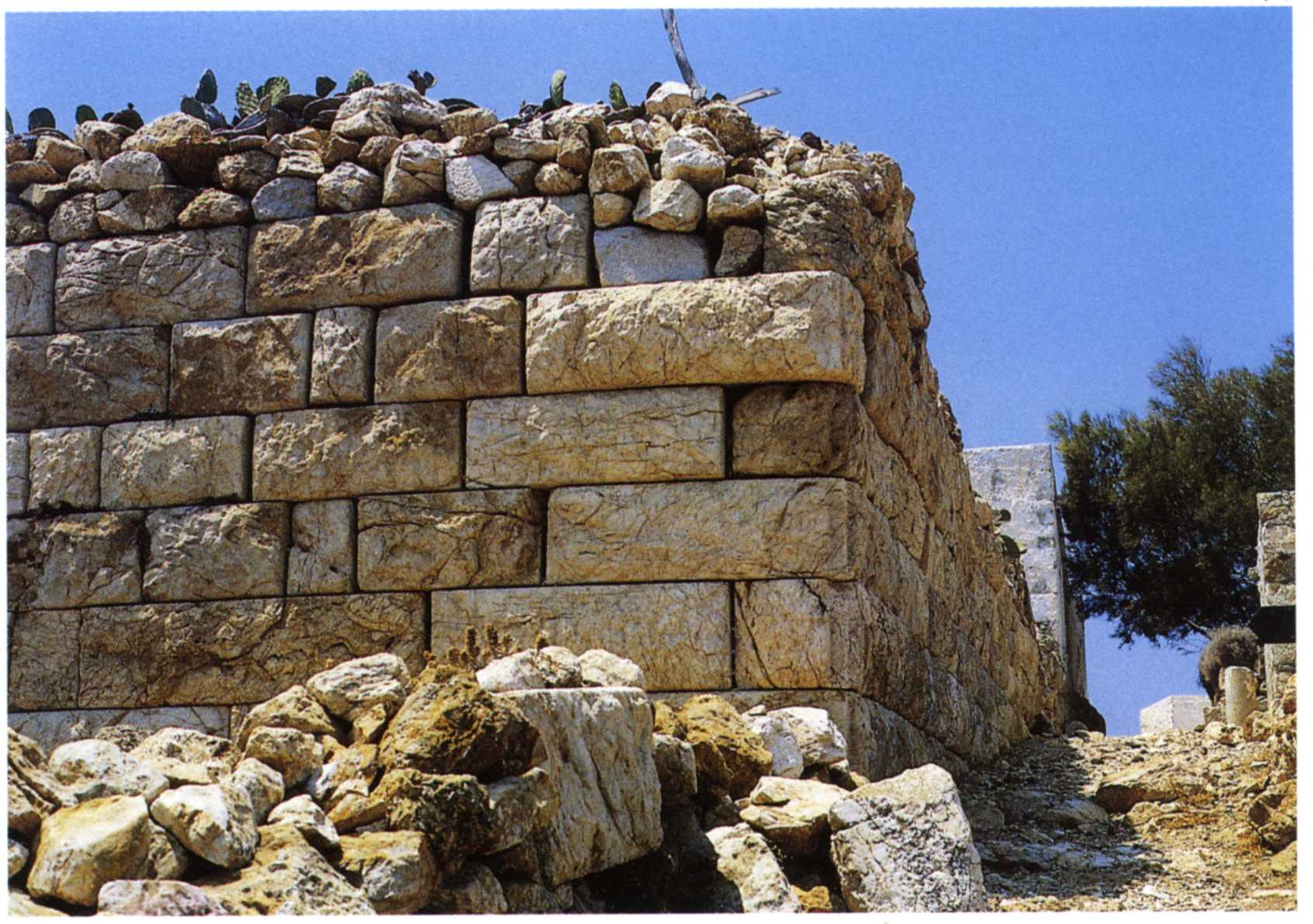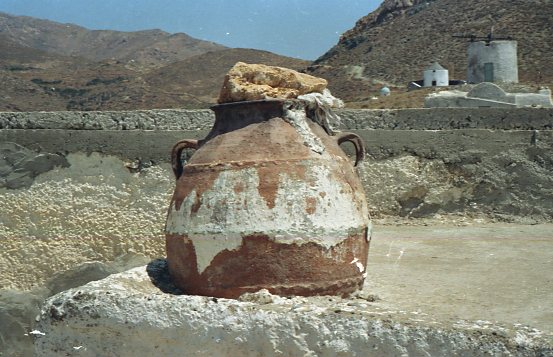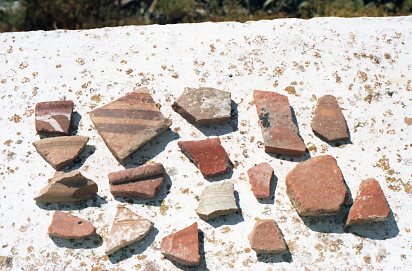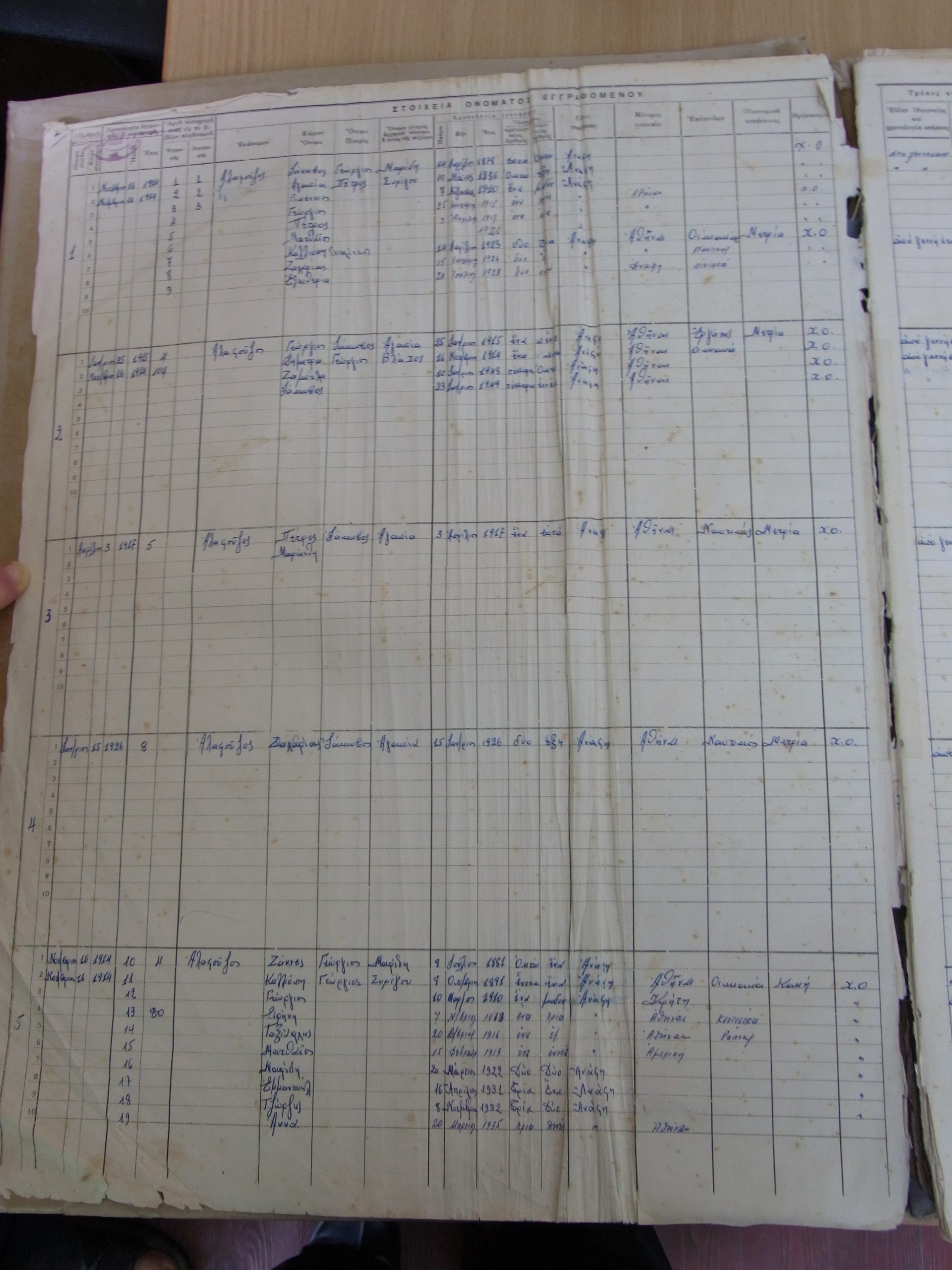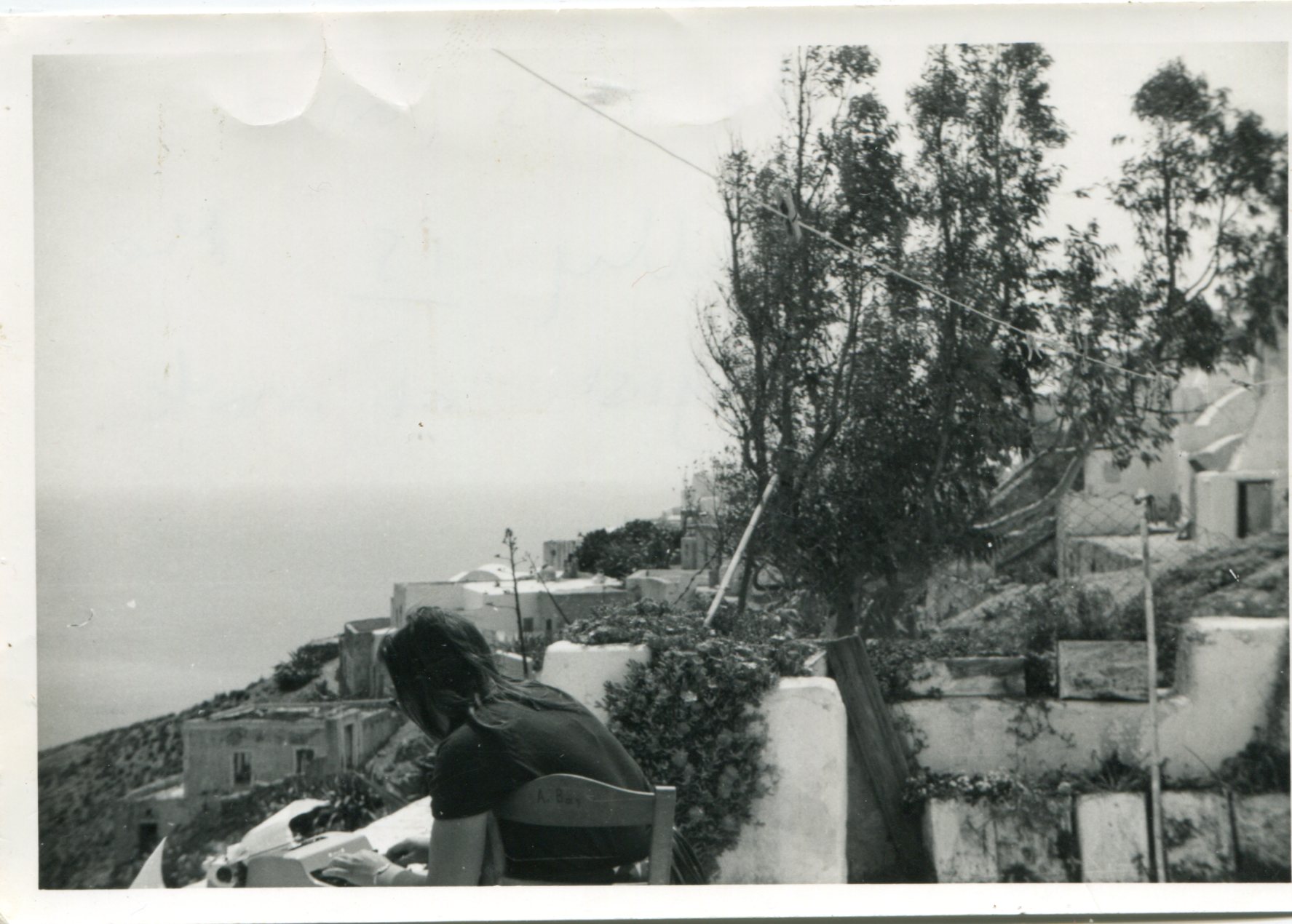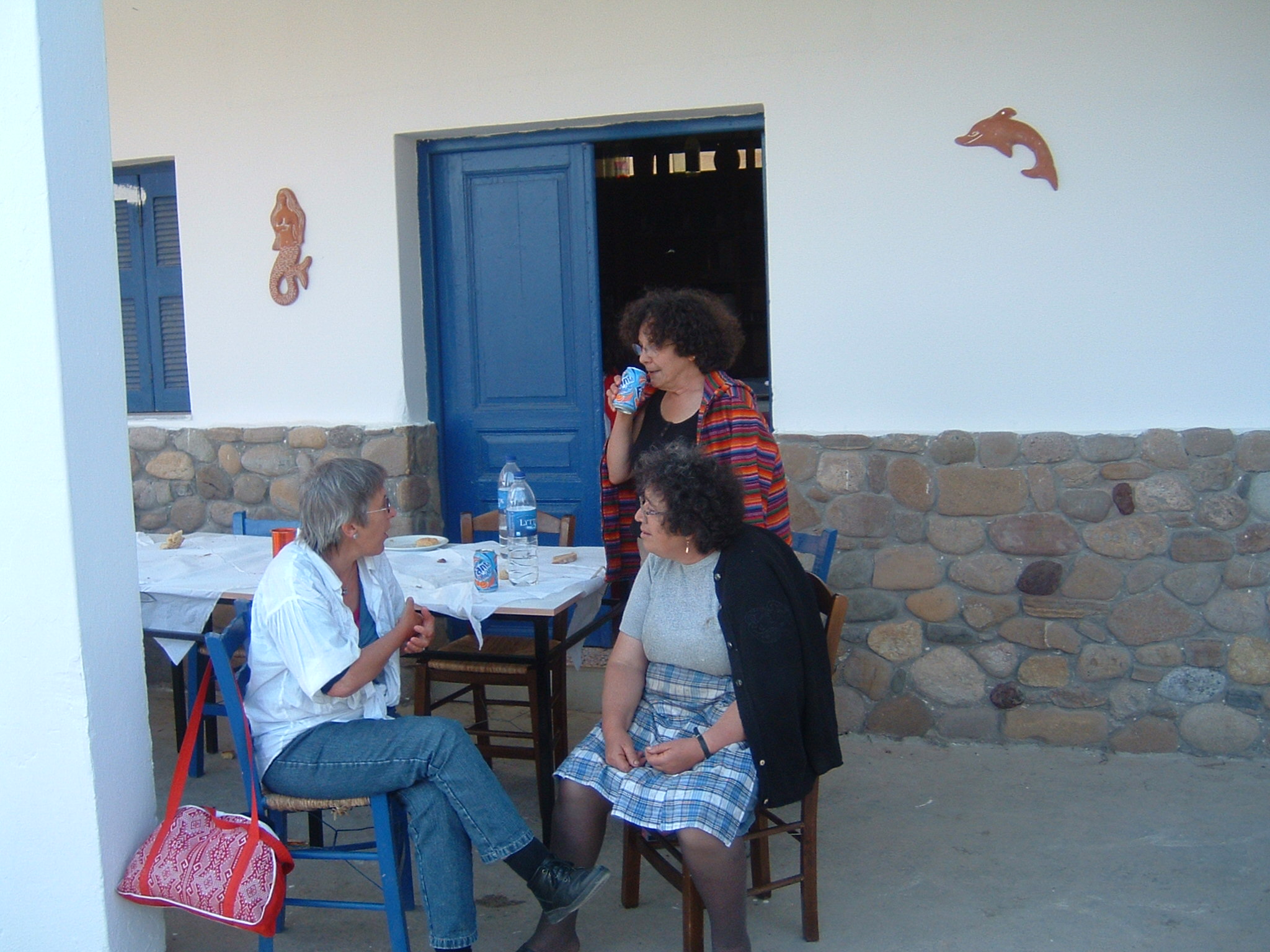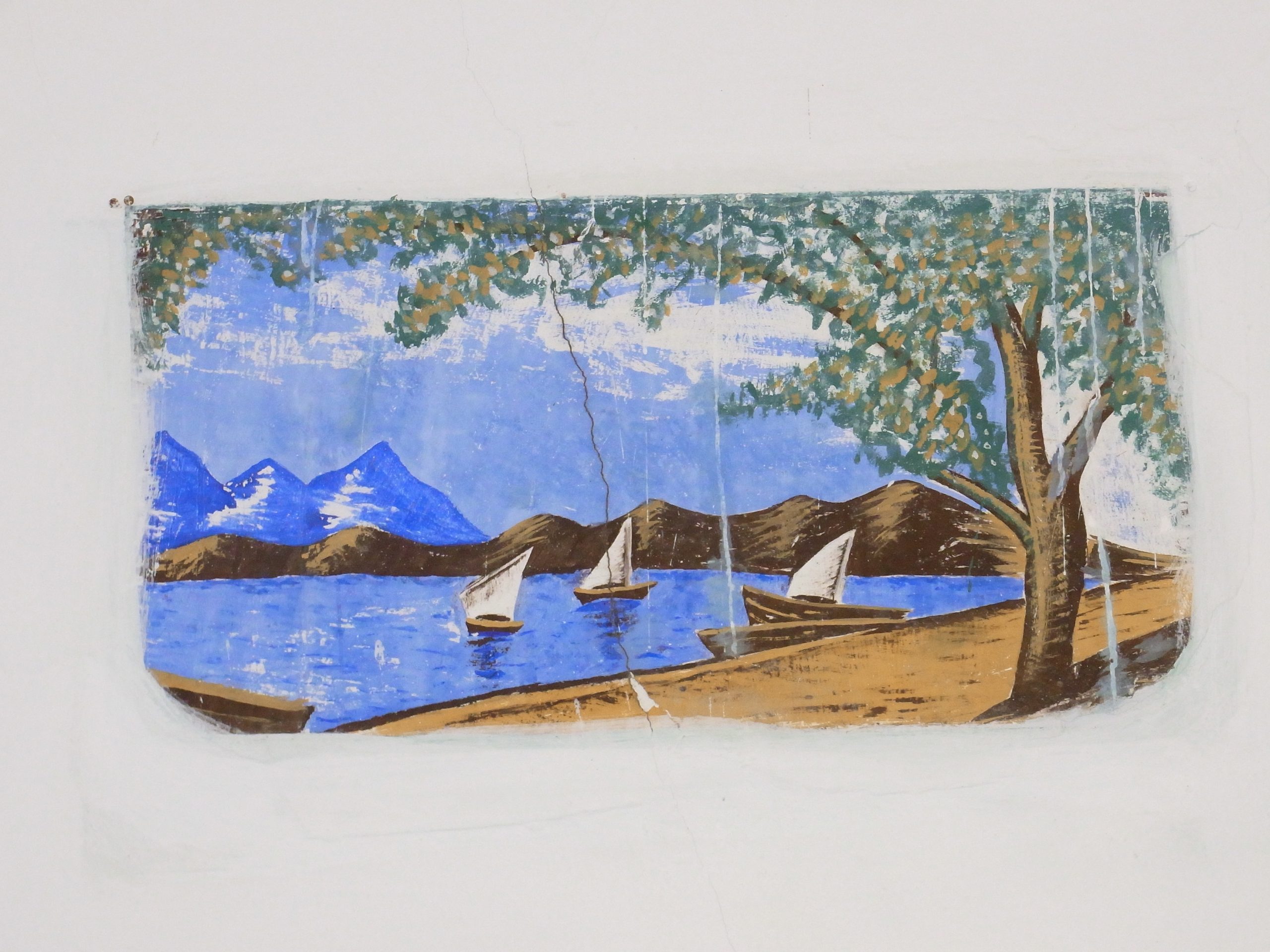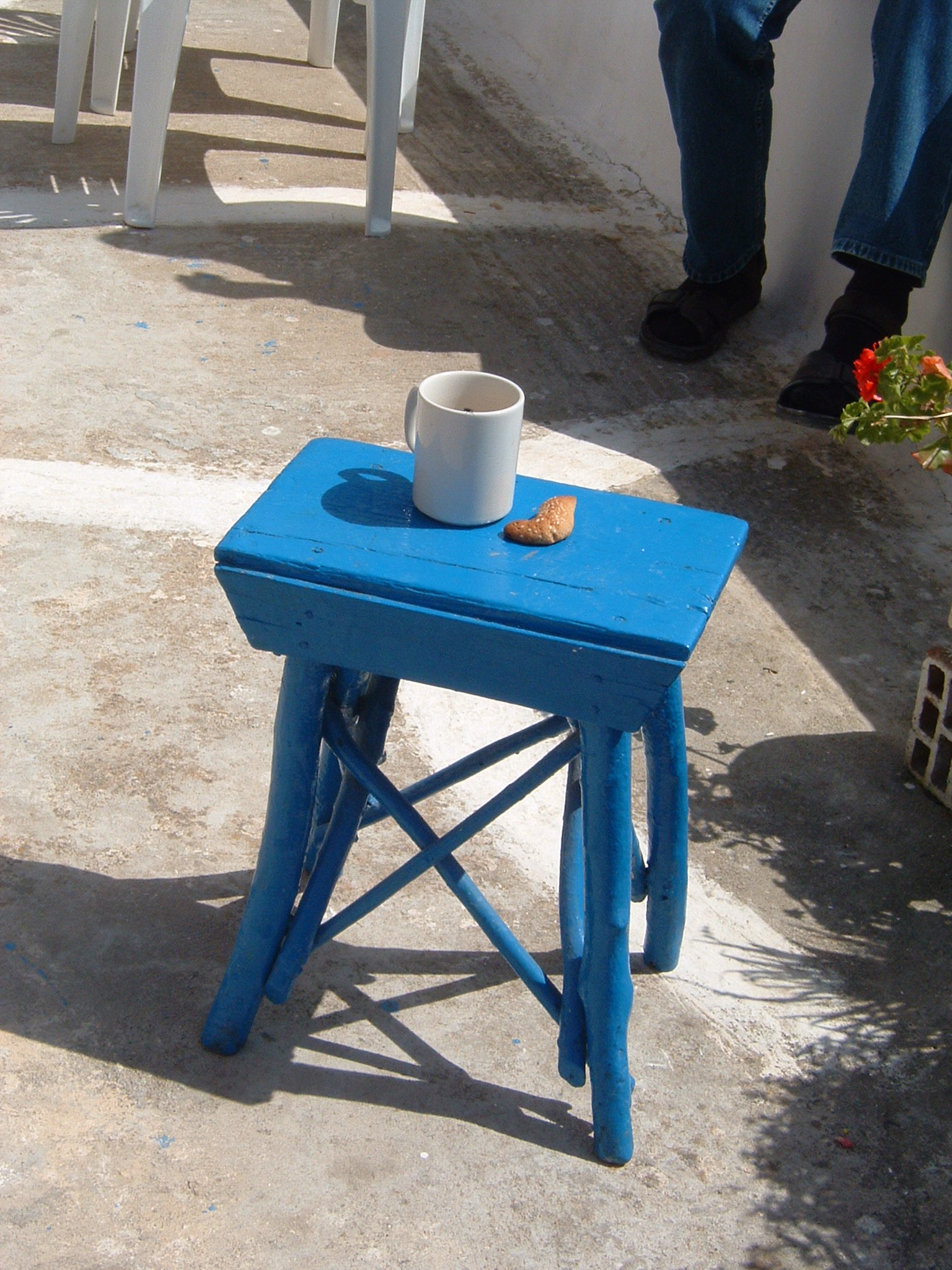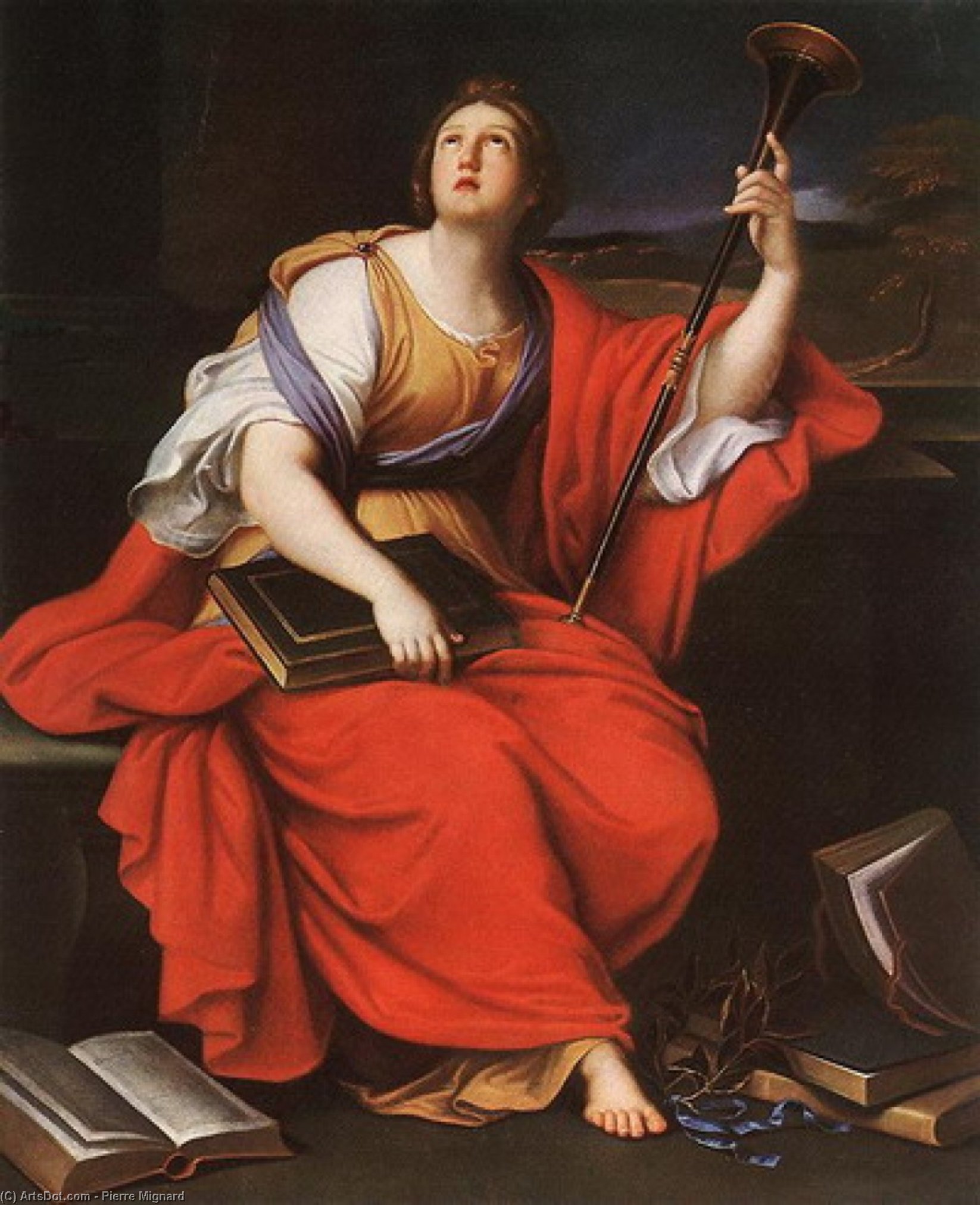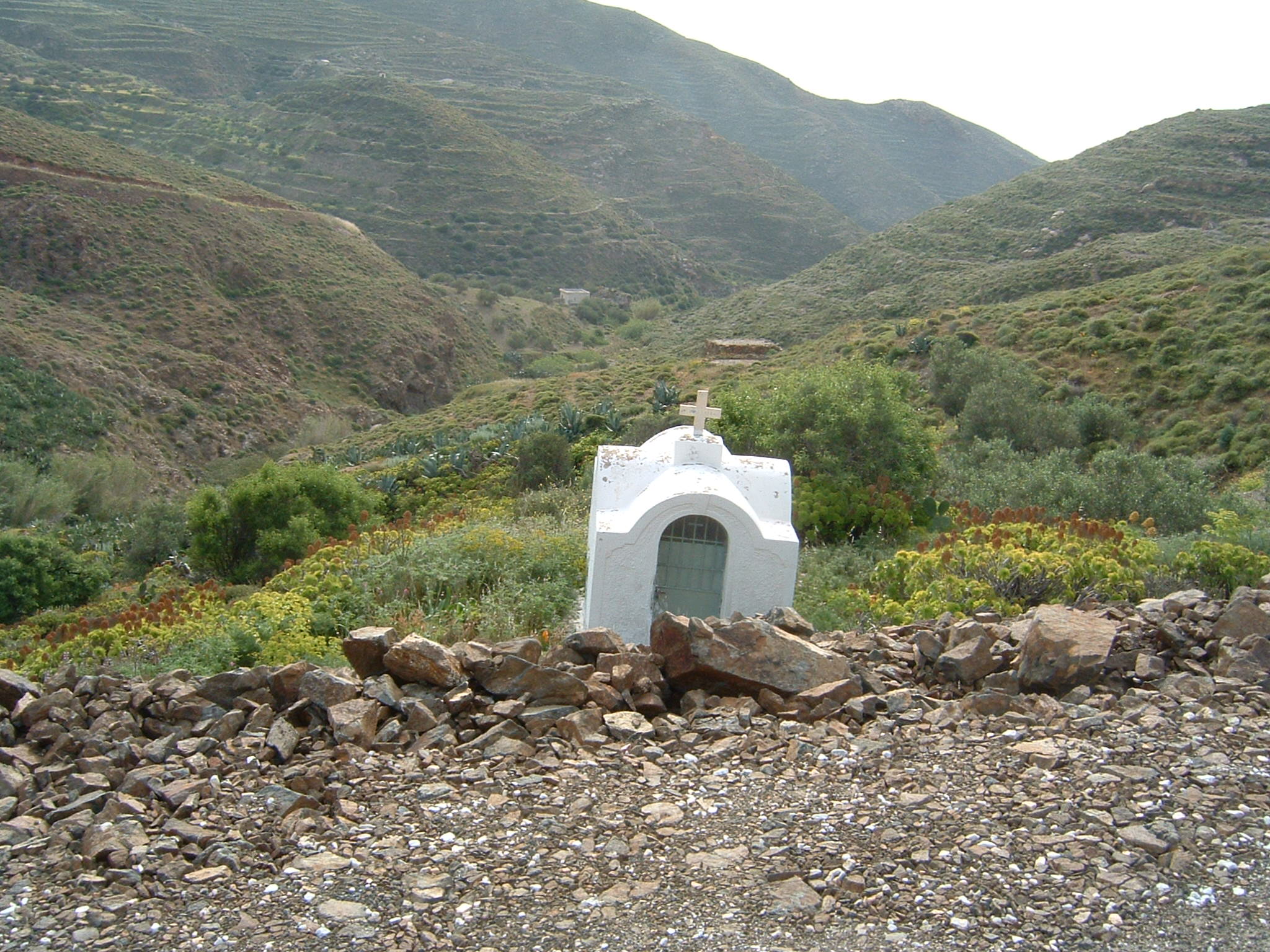Margaret Kenna
Notes for Phenomenon 2
In outlining the theme for the second gathering on Anafi, Phenomenon focuses on ‘histories’. The plural form of the word (‘histories’) draws attention to the many and varied views and interpretations of past events and their significance. It also suggests the distinction in modern Greek between ‘istoria’ (this is perhaps what the statement calls ‘the master narrative’ of ‘history’) and ‘istories’. The latter word is often used in popular speech to refer to quarrels and altercations – in other words, happenings about which different stories could be told, depending on the position of those involved. While usually implying that these happenings are essentially minor, everyday events, the word draws attention once again to the social construction and personal perspectives underlying the account/s.
The statement outlining the themes for the residency also makes reference to the layers of material remains on Anafi, as examples of the coexistence of many periods of history – many histories. Best known, perhaps, are the remains of the temple of Apollo which form part of the Lower Monastery at the eastern end of the island. Some material remains on the island are known and valued, both locally and by visitors, others are almost completely ignored (for example the remains of the Venetian kastro on the rock above the village). Similarly, some of these periods of history are given more attention than others and some may be deliberately ignored (‘forgotten’) for a variety of reasons.
The Hellenistic period (roughly stretching from the death of Alexander the Great in 323 BCE) to ‘the rise of Rome’ (about 300 years later) is one of the historical periods on Anafi which is hardly spoken about on the island or mentioned in scholarly sources. This is despite the extensive remains on Kastelli, those in the local museum, and others in the National Archaeological Museum in Athens. However, the Hellenistic period is now becoming the subject of more intensive scholarship, so it is possible that more work will be done on the remains on Anafi. Some of the reasons for the neglect of the centuries of Hellenism lie in the perceived greater importance in the history of Greece of the ancient period, and hence those earlier centuries feature in the research and publications (and careers) of scholars. The ephorates which administer the various areas of Greece and particular epochs, also receive funding in accordance with the perceived significance of the material under their jurisdiction. The Ottoman period, the buildings and other remains which reflect the Jewish presence in Greece, the Byzantine period, have never been accorded the significance or the funding of the ancient period, and there is also the question of location – Anafi has always been difficult to get to and to leave out of season. But the possibility of an Akrotiri-like site might be persuasive both for ephorates, archaeologists and researchers.
Apart from a few sources, little is known also about Venetian Anafi, again a period not highlighted in the national story (maybe, because like the Ottoman period, Greece was under foreign domination). One of the rulers of the island, William, became Duke of Naxos after twice acting as Regent. His daughter, Florence (1463-1528), ruled the island when he moved to Naxos and she is mentioned in the work performed on Anafi in 2009 by the Cretan group, Chroes (“Elektra – Spoudi sto Fos [Electra – Study in Light]”. To find out more would probably require going to archives in Venice as well as to those on Naxos. Anecdotal evidence from archaeologists and other scholars who have visited the island suggest that excavations, whether for ancient, Hellenistic, Venetian, or more recent periods would certainly repay the time and effort – but would the ephorate/s be able to fund them?
Material objects – large, as in the case of temple walls, small, as in the case of a piece of pottery – some ancient, some more recent (providing evidence that the island once had its own potter), can hint at history/ histories which are sometimes ignored, or forgotten, or deliberately concealed. But perhaps the focus on what can be seen and what can be read risks ignoring the non-visual clues to different kinds of history: sounds, smells, textures, tastes, bodily sensations, which can trigger memories and encourage the recall of the past (as the smell of the madeleines did for Proust).
My own research on Anafi over the past fifty years (since May 1966) has encountered both ‘history’ and ‘histories’, a ‘master narrative’ and accounts of events from different perspectives – and also absences, silences, gaps, and elisions. The evidence I have found was both visual (writings, photographs and pictures, looking at the landscape) and oral/ aural – asking questions and listening to what people told me. The ‘history’ of Anafi is given in the Great Greek Encyclopedia and now in many other sources, including Wikipedia. The ‘histories’ of Anafi depend on different kinds of evidence – this might be material evidence such as that found at archaeological sites, or evidence from records and previously unknown sources, such as memoirs, maps, drawings, and photographs. And, of course, there are people’s ‘stories’, accounts of events from their individual standpoints.
Taking the written sources first, there are various kinds of register on the island which contain information from which different accounts of the island’s history/ histories from the mid-nineteenth century can be compiled – the demotologion, a register of those who have the right to vote as island residents (in the UK this would be called the electoral register), the records of births (including the register of male babies which will be used to determine when they should be called up for national service) and the death register (often giving cause of death, which in turn gives evidence of past events). The electoral register shows voting eligibility, and also notes the dates when people decided to change their registration to an urban area to which they had migrated – giving a ‘history’ of island depopulation. There is also the annual record of agricultural statistics, which, when studied over years and decades, reveals, for example, a history of the abandonment of subsistence agriculture and livestock herding (and more recently, the revival of small scale ‘domestic’ agriculture). The evidence of one’s own eyes confirms this abandonment – nearly everywhere there are hill terraces, overgrown with bushes, no longer kept in check by grazing animals. Photographs of past decades emphasize the contrast between past and present, so one kind of evidence confirms another.
It was having these kinds of sources to draw on in my own research which allowed me to talk to people about their lives, their hopes for their children, the reasons for staying on or leaving the island, or indeed, more recently, returning. These accounts often included istories, accounts of quarrels or disputes which had triggered a decision. I was also able to note what they did not want to talk about, events that I knew about from the registers, which were never mentioned. Or to note that the ‘story’ they told was very different from that which the written evidence suggested (see Kenna 2001b and 2017).
As participants in Phenomenon 2017 will be aware, one of the ‘histories’ of the island is that of its use as a place of deportation and exile for people considered to be ‘public dangers’: animal thieves, drug dealers, hashish smokers, and political dissidents. Although this is, in one sense, part of the ‘master narrative’ of national history, it is also an aspect which has been covered up, neglected, or ‘forgotten’. The memoirs of exiles (and of some of the other ‘public dangers’), and of those who visited them, give evidence of these periods, so that they can be reconstructed and new interest in them aroused. Letters, diaries, reports written on cigarette papers, can be found in archives (such as ASKI). Sources about the Metaxas exiles in the 1930s are supplemented by the archive of glass negatives revealing the everyday as well as the special occasions in their lives, and showing the village and the landscape of the island during the late 1930s and early 1940s (the finding of this archive, and its contents can be found on a website, and also seen in the book The Social Organisation of Exile” – translated into Greek and published by Alexandreia Press). Although the images of the village and landscape are of great interest to the islanders and migrants, many in both communities did not want the history of exile made public (in the books published in 2001a and 2004) for a variety of reasons. Indeed, if one looks around for any material remains of the exiles, there are none in public view. The rented building which the exiles used as an ‘office’ (on the footpath running diagonally down from ‘Alexandra’s’) has been knocked down and the site built over. A house where an exile (probably Apostolos Apostolides, whose funeral in February 1942 is recorded in the photo-archive) painted landscapes on the walls of the main room has suffered from damp in recent years but most of the wall-paintings still survive (although they cannot be viewed) .
A few people are able to show photographs (usually of a family occasion such as a wedding) taken by the exiles, and some houses have traces that exiles lived in them, such as the small stools and benches made from pieces of wood from packing cases and stout bamboo canes, which can be seen in the archive photographs.
Of more recent published sources, there are those which give different ‘histories’ of events on the island during the Occupation and Civil War. One of these was written by Philia Geotes Hayes, daughter of a Greek priest who migrated to the United States, constructed from family reminiscences told to her in the US and from istories recounted by relatives and others to her on visits to Greece, and to Anafi (Hayes 2010). One of these istories is about the circumstances leading up to the acquisition by a particular family of a house outside the village, on the path down to the harbour, from her mother’s father, who had returned to the island during the Occupation and the famine in Athens (see pp. 177-187). One version of the story claims that the house was sold ‘out of spite for relatives who would not look after him’, another that it was sold in exchange for being fed.
Taking their place in visual and oral/ aural history are poetry, music, and songs, which are also strong and powerful mediums of memory and history/ histories. So strong, that repressive regimes have banned, or tried to ban, various kinds of music and song, from rebetika to the songs of Theodorakis. The traditional music of Anafi, with its goatskin bagpipes (tsabouna) and drums, and the verses (mantinades) sung at weddings and celebrations, also contain and elicit memories of the past as well as weaving themselves into the present to become, in turn, part of the history of the island. Some schoolteachers have encouraged local children to ask their parents and grandparents to recall some of these rhymes so that they can be preserved.
Turning from written, oral, and visual evidence of history/ histories to those based on senses other than vision and hearing, there are the memories and histories brought to mind by smells, by sensations of touch, and by bodily memory. Wherever I am, Anafi immediately comes to mind when I smell thyme, taste hard goat cheese, feel the prickly scratch of a horsehair-stuffed sofa, or begin to move my arms and hands so as to wind a ball of yarn from a skein of wool. These sensory memories remind me of events and people, sometimes not thought of for months if not years. When I talked to former exiles about their memories of their time on the island, the mention of a smell or a taste elicited accounts which in some cases reduced them to tears, with the comment, ‘Only now do I remember that’. David Sutton (1998) has written about smell, food, and memory in his account of research on the island of Kalymnos. So it is important to be aware that aspects of history can be elicited by reference to the senses.
There has been a major shift in the study of history in past decades to take account of plural ‘histories’, to put together the different layers. The ‘kings and wars’ type of history is one among many kinds, including ‘history from below’, the history of the majority of the populations ruled over by the kings and affected by wars – the workers, agricultural labourers, domestic servants, builders, laundresses, dock workers. Other types of history highlight age (the history of childhood), gender (women’s history), sexuality (gay/ LGBT history), ethnic/ cultural identity (black history). There are also histories of smell, of taste, and of the body itself. To quote from Kerenidis’s notes in Bulletin Gamma: ‘what can be seen at any historical moment depends on the conditions that enable things to become visible’. This also reminds us that some of the history of the exiles on Anafi ‘came to light’ with the archive of glass and celluloid negatives at a ‘historical moment’ in modern Greek history (the late 1980s) when it was much safer than in earlier years for such an archive to be revealed.
To be sensitive to the issues raised by these different kinds of history, scholars and writers have had to be aware of the implications of the words they use. Well known in Greece is the vocabulary employed for the period known variously as the ‘emfilios’ (Civil War in English, although the derivation of the Greek word could be said to imply fratricide, the killing of those closely related) and as ‘simmoritopolemos’ (bandit war). Marion Sarafis (1990) and Neni Panourgia (2009), among others, have written about the uses and connotations of these words. Paul Connerton has written about the ways in which societies remember (1989), and as we will see, forget (Connerton 2009).
The Muse of History, Clio, is one of the nine daughters of Zeus and Mnemosyne (Memory, another word which reminds us of remembering, but also of the possibilities of glossing over, and forgetting). Clio’s name in derivation alludes to celebrating and making famous as well as simply recounting (telling). She is often depicted with a scroll and books, suggesting that the telling is written to be read (and thus can be written in different ways), and with a trumpet, which not only suggests oral presentation, but the use of music to elicit emotions and memories. In addition, she wears a laurel wreath, suggesting not just honouring the worthy and giving them well-deserved fame, but also indicating, we might suggest, that smells and tastes (and indeed textures) can elicit memories and bring the glossed over and forgotten back to consciousness. So the Muse of History herself reminds us of all the senses – sight, sound, touch, taste, smell – as ways of remembering.
She, and her mother Mnemosyne (Memory), also remind us of the river-goddess and spiritual power (daemon) Lethe, Forgetting. While forgetting could be the enforced policy of a repressive regime, it might also be practised or imposed as a way of trying to heal deep wounds, or in order to construct a new identity (Connerton 2009), so it can be recognised that forgetting is not always to be viewed negatively. Anthropologists have studied ‘structural amnesia’. This is a term given to a kind of ‘editing process’ by which only relevant information is conveyed – but when something in the past does become important (such as an ancestor who allows a claim on property to be made) the ‘forgotten’ item re-enters the account. In some societies it is a form of telescoping genealogies (particularly royal lineages) in oral accounts. Anthropologists who visited decades after the first account was recorded found that there were still the same number of steps between the present and a founding ancestor (in some cases, Adam and Eve). The term ‘structural amnesia’ was coined to indicate not necessarily forgetting but to indicate a process which allowed the list to be remembered without being extraordinarily long and detailed – one might call it a paradoxical kind of forgetting in order to remember.
The topic of remembrance has particular importance for me because of the theme of my doctoral thesis (ritual and property), a topic to which I more recently returned (Kenna 2015). The original research on Anafi (1966-67) showed the intertwined relationship between the practice of naming, rights to inherit because of a name, and obligations of the heirs to perform a cycle of rituals (mnimosyna – a word which echoes the name of the mother of the Muses). The landscape of the island is dotted not only with houses but also with chapels and with bone depositories (mnimouria), so that everywhere one looks, memories are triggered of particular people, families and events and the structural principles which guide island social life are given a visible material form.
REFERENCES
Paul Connerton, 1989. How Societies Remember. Cambridge University Press: Cambridge.
Paul Connerton, 2009. How Modernity Forgets. Cambridge University Press: Cambridge.
Philia Geotes Hayes, 2010. Twice my Child: from the Aegean to the American Midwest – the stories of Five Generations of Island Mothers. Self-published.
Margaret E. Kenna, 2001a. The Social Organisation of Exile: Greek Political Detainees in the 1930s. Harwood: Amsterdam.
Margaret E. Kenna, 2001b. Greek Island Life: Fieldwork on Anafi. Harwood: Amsterdam (out of print, but 2nd edition to be published by Sean Kingston Publishing, 2017)
Margaret E. Kenna, 2004. I Kinoniki Organosi tis Eksorias: Politiki Kratoumeni ston Mesopolemo. Alexandreia: Athens.
Margaret E. Kenna, 2015 ‘Rituals of Forgiveness and Structures of Remembrance: Memorial Services and Bone Depositories on the island of Anafi, Greece’, History of Religions 54, 3: 225-254.
Margaret E. Kenna, 2016. Anafi: Island of Exile (privately printed, available in Anafi tourist shops).
Margaret E. Kenna, 2017. Anafi: a Brief Guide (privately printed, available in Anafi tourist shops).
Neni Panourgia, 2009. Dangerous Citizens: the Greek Left and the Terror of the State. Fordham University Press: New York.
Marion Sarafis, 1990. ‘Contemporary Greek History for English readers: an attempt at a critical analysis’, in Background to Contemporary Greece Vol 1 (eds.) Marion Sarafis & Martin Eve, pp. 123-152. Merlin Press: London.
David E. Sutton, 1998. Memories cast in Stone: the Relevance of the Past in Everyday Life. Berg: Oxford.
